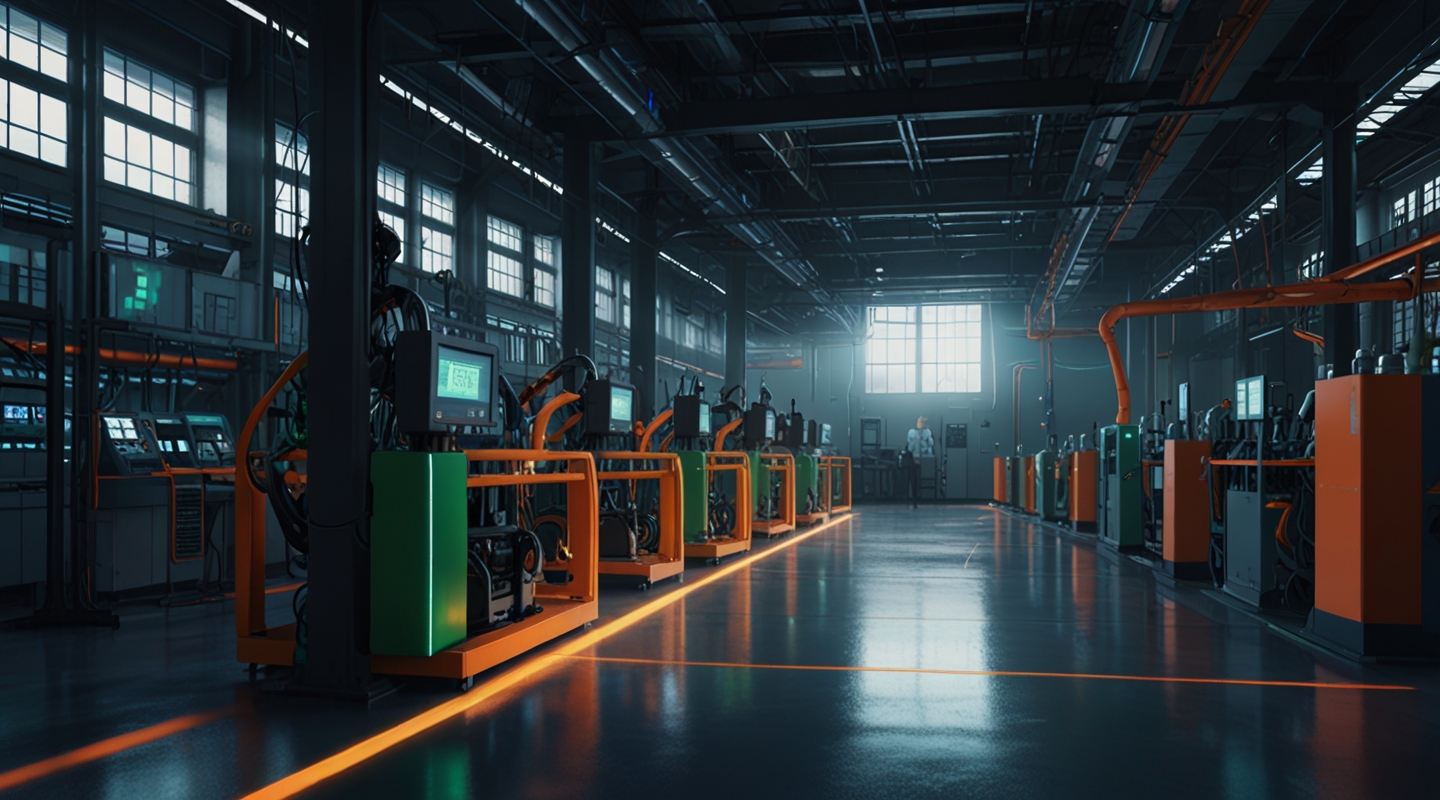Why Predictive Maintenance Feels Like the Future (Because It Is)
Alright, picture this: you’re managing an industrial plant—maybe a sprawling factory pumping out thousands of widgets each day. Traditionally, maintenance meant scheduled check-ups or, worse, reacting to breakdowns after they happen. You know the drill—expensive downtime, rushed fixes, and an endless game of catch-up.
Enter AI-driven predictive maintenance. It’s not just a buzzword or a fancy upgrade; it’s a shift from guesswork to foresight. Using AI models trained on mountains of sensor data, historical failure records, and environmental factors, we can now literally predict when a machine is about to throw a tantrum. The result? Fix before failure, keep the lines humming, and avoid those heart-stopping moments of unexpected shutdown.
Honestly, I wasn’t sold on this at first. Could a few algorithms really replace decades of hands-on mechanic intuition? Turns out, yes—with the right data, the right tools, and a bit of patience.
How AI Sees What We Can’t
Imagine you have a motor running 24/7. It vibrates, heats up, slows down, or produces odd noises before it fails. Humans can detect some of this, but AI systems equipped with vibration sensors, thermal cameras, and acoustic monitors can sense subtle patterns way before we do. They spot micro-changes invisible to the naked eye—those tiny tremors or shifts in sound frequency that scream “something’s off.”
These AI models continuously learn, adapting to new conditions and updating their predictions in real-time. It’s like having a seasoned engineer on call 24/7, except this engineer never sleeps, never gets distracted, and crunches millions of data points simultaneously.
In one of my recent projects, we implemented a predictive maintenance system on a packaging line. Within weeks, the AI flagged a gearbox that was showing early signs of wear. We swapped the part during a scheduled downtime instead of waiting for a catastrophic failure. The cost savings? Substantial. The peace of mind? Priceless.
Implementing AI Predictive Maintenance: The Real Deal
Okay, so you’re convinced this is cool tech, but how do you actually get started? Here’s a quick, no-nonsense guide based on what I’ve learned the hard way:
- Start with data collection: Without good data, AI is just a parrot repeating guesses. Invest in sensors that capture vibration, temperature, pressure, or whatever metric matters to your equipment.
- Clean and organize your data: Raw data is messy. You’ll need to filter out noise, align timestamps, and ensure consistency. This step often eats more time than expected—brace yourself.
- Choose your AI models wisely: From simple regression models to complex neural networks, pick what fits your data size and problem complexity. Don’t overcomplicate—sometimes simpler models give faster, more interpretable results.
- Integrate with existing systems: Your AI insights should feed into maintenance scheduling tools or operator dashboards. The goal is seamless action, not another siloed report nobody reads.
- Iterate and improve: AI is not a “set it and forget it” deal. Monitor performance, retrain models, and adjust thresholds based on real-world feedback.
And, yes, you’ll hit bumps. Sensor malfunctions, data gaps, or unexpected machine behaviors happen. But each hiccup is a learning opportunity.
The Tangible Benefits You Can’t Ignore
Beyond the obvious—less downtime and fewer emergency fixes—AI-driven predictive maintenance offers some surprisingly nice perks:
- Cost optimization: Avoid replacing parts too early or too late. AI can help you find the sweet spot, stretching asset life without risking failure.
- Safety boosts: Predicting failures means preventing accidents caused by malfunctioning equipment. Your team stays safer, and that’s priceless.
- Resource efficiency: Maintenance crews can focus their efforts where it really matters instead of wasting time on blanket inspections.
- Environmental impact: Well-maintained machinery runs more efficiently, consuming less energy and reducing waste.
Plus, there’s something satisfying about turning data into action—like watching a detective piece together clues that no one else can see.
But, It’s Not Just About Tech—It’s About People
One thing I want to highlight, especially for those rolling out these systems, is the human factor. AI is powerful, but it’s not magic. The best results come when engineers, operators, and data scientists collaborate closely. I’ve seen projects stumble when AI is shoved in as a side project with zero training or buy-in from the folks on the ground.
So, invest in training, foster open communication, and treat predictive maintenance as an ongoing journey, not a one-off upgrade. And remember, sometimes the best insights come from that experienced mechanic who’s been around the block—AI should augment their expertise, not replace it.
Where This Is Heading
Looking ahead, AI-driven predictive maintenance will only get smarter. Emerging trends like edge computing mean predictions can happen right on the factory floor, reducing latency and improving responsiveness. Coupling this with digital twins—virtual replicas of physical equipment—opens up wild possibilities for simulations and “what-if” analyses.
Plus, as more industries adopt these tools, cross-company data sharing (while respecting privacy) could help models learn faster and become more robust. Imagine a future where your AI is informed not just by your plant, but thousands of others like it.
Anyway, it’s a thrilling time to be in this space. If you’re an engineer, manager, or AI professional dipping your toes into industrial automation, predictive maintenance is a place where theory meets real-world impact.
Final Thoughts
So, what’s the takeaway? AI-driven predictive maintenance isn’t just a shiny new toy. It’s a practical, proven approach that can turn your maintenance from reactive chaos into proactive precision. The journey might be messy sometimes—data issues, skeptical teams, or tech hiccups—but the payoff is worth it.
Give it a shot. Start small, learn fast, and build momentum. And hey, if you’re already in the trenches, I’d love to hear your war stories or tips. Because in this game, sharing what works is how we all get better.
So… what’s your next move?






